How You Can Use Machine Learning to Automatically Label Data
KDnuggets
FEBRUARY 18, 2022
AI and machine learning can provide us with these tools. This guide will explore how we can use machine learning to label data.

KDnuggets
FEBRUARY 18, 2022
AI and machine learning can provide us with these tools. This guide will explore how we can use machine learning to label data.

Netflix Tech
FEBRUARY 18, 2022
By: Ankush Gulati , David Gevorkyan Additional credits: Michael Clark , Gokhan Ozer Intro Netflix has more than 220 million active members who perform a variety of actions throughout each session, ranging from renaming a profile to watching a title. Reacting to these actions in near real-time to keep the experience consistent across devices is critical for ensuring an optimal member experience.
This site is protected by reCAPTCHA and the Google Privacy Policy and Terms of Service apply.

Confluent
FEBRUARY 18, 2022
As data flows in and out of your Confluent Cloud clusters, it’s imperative to monitor their behavior. Bring Your Own Monitoring (BYOM) means you can configure an application performance monitoring […].

Cloudera
FEBRUARY 14, 2022
Note: This is part 2 of the Make the Leap New Year’s Resolution series. For part 1 please go here. When we introduced Cloudera Data Engineering (CDE) in the Public Cloud in 2020 it was a culmination of many years of working alongside companies as they deployed Apache Spark based ETL workloads at scale. We not only enabled Spark-on-Kubernetes but we built an ecosystem of tooling dedicated to the data engineers and practitioners from first-class job management API & CLI for dev-ops automatio

Advertisement
In Airflow, DAGs (your data pipelines) support nearly every use case. As these workflows grow in complexity and scale, efficiently identifying and resolving issues becomes a critical skill for every data engineer. This is a comprehensive guide with best practices and examples to debugging Airflow DAGs. You’ll learn how to: Create a standardized process for debugging to quickly diagnose errors in your DAGs Identify common issues with DAGs, tasks, and connections Distinguish between Airflow-relate

KDnuggets
FEBRUARY 17, 2022
There's no free lunch in machine learning. So, determining which algorithm to use depends on many factors from the type of problem at hand to the type of output you are looking for. This guide offers several considerations to review when exploring the right ML approach for your dataset.

Data Engineering Podcast
FEBRUARY 13, 2022
Summary Collecting, integrating, and activating data are all challenging activities. When that data pertains to your customers it can become even more complex. To simplify the work of managing the full flow of your customer data and keep you in full control the team at Rudderstack created their eponymous open source platform that allows you to work with first and third party data, as well as build and manage reverse ETL workflows.
Data Engineering Digest brings together the best content for data engineering professionals from the widest variety of industry thought leaders.

Cloudera
FEBRUARY 17, 2022
CDP Private Cloud Base is an on-premises version of Cloudera Data Platform (CDP). This new product combines the best of Cloudera Enterprise Data Hub and Hortonworks Data Platform Enterprise along with new features and enhancements across the stack. This unified distribution is a scalable and customizable platform where you can securely run many types of workloads.

KDnuggets
FEBRUARY 14, 2022
Calculus is the key to fully understanding how neural networks function. Go beyond a surface understanding of this mathematics discipline with these free course materials from MIT.

Data Engineering Podcast
FEBRUARY 13, 2022
Summary Streaming data sources are becoming more widely available as tools to handle their storage and distribution mature. However it is still a challenge to analyze this data as it arrives, while supporting integration with static data in a unified syntax. Deephaven is a project that was designed from the ground up to offer an intuitive way for you to bring your code to your data, whether it is streaming or static without having to know which is which.

Pipeline Data Engineering
FEBRUARY 18, 2022
Data engineers have to wear many different hats at the same time: they are architects, designers, builders, maintainers, procurement and quality assurance — to just name a few. If you’d like to break into this profession, you need to prove that you can do all of the above, and more. One of the key assets you can use to do that is a data product that you’ve built with your own hands.

Speaker: Tamara Fingerlin, Developer Advocate
Apache Airflow® 3.0, the most anticipated Airflow release yet, officially launched this April. As the de facto standard for data orchestration, Airflow is trusted by over 77,000 organizations to power everything from advanced analytics to production AI and MLOps. With the 3.0 release, the top-requested features from the community were delivered, including a revamped UI for easier navigation, stronger security, and greater flexibility to run tasks anywhere at any time.

Cloudera
FEBRUARY 18, 2022
The pandemic has accelerated diversity of teams, remote working, and the way we work, but most of all, it has emphasised the necessity of soft skills in our leaders. Empathy stands out as a core skill that must be alive and nurtured within our teams if we are to achieve our desired outcomes in 2022 and beyond. This blog explores what empathy looks like in a business context, why it’s so important, and what we’re up to at Cloudera.

KDnuggets
FEBRUARY 16, 2022
In this article, I will walk you through how you can use your data science skills to land freelance gigs.
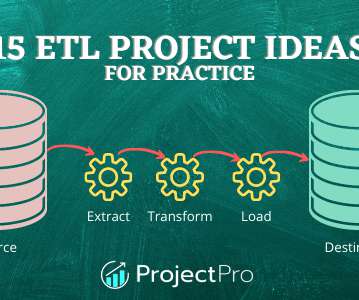
ProjectPro
FEBRUARY 18, 2022
The big data analytics market is expected to grow at a CAGR of 13.2 percent, reaching USD 549.73 billion in 2028. This indicates that more businesses will adopt the tools and methodologies useful in big data analytics, including implementing the ETL pipeline. Data engineers are in charge of developing data models, constructing data pipelines, and monitoring ETL (extract, transform, load).

DataKitchen
FEBRUARY 18, 2022
In this webinar, take a trip to DataOps 101 and learn the basics! The post DataOps For Beginners first appeared on DataKitchen.
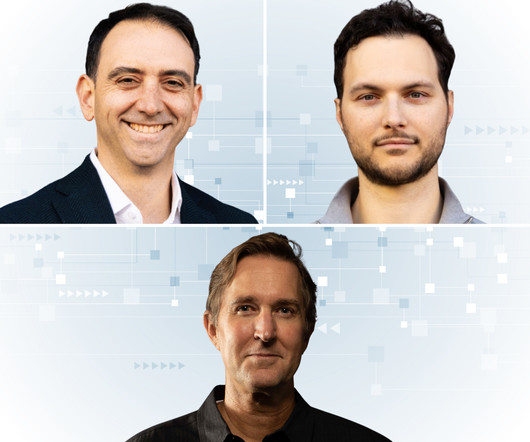
Speaker: Alex Salazar, CEO & Co-Founder @ Arcade | Nate Barbettini, Founding Engineer @ Arcade | Tony Karrer, Founder & CTO @ Aggregage
There’s a lot of noise surrounding the ability of AI agents to connect to your tools, systems and data. But building an AI application into a reliable, secure workflow agent isn’t as simple as plugging in an API. As an engineering leader, it can be challenging to make sense of this evolving landscape, but agent tooling provides such high value that it’s critical we figure out how to move forward.

Cloudera
FEBRUARY 16, 2022
While it is a little dated, one amusing example that has been the source of countless internet memes is the famous, “is this a chihuahua or a muffin?” classification problem. Figure 01: Is this a chihuahua or a muffin? In this example, the Machine Learning (ML) model struggles to differentiate between a chihuahua and a muffin. The eyes and nose of a chihuahua, combined with the shape of its head and colour of its fur do look surprising like a muffin if we squint at the images in figure 01 above.

KDnuggets
FEBRUARY 18, 2022
Check out this reasoned comparison of 2 critical machine learning algorithms to help you better make an informed decision.
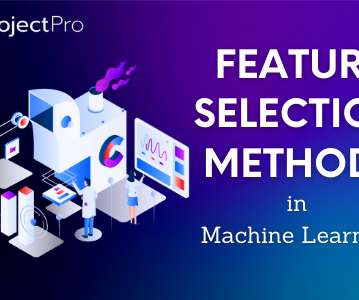
ProjectPro
FEBRUARY 17, 2022
Feature selection techniques are fundamental to predictive modeling tasks; one can not create predictive models without selecting the features correctly. What are these feature selection methods, and how are they used in building efficient predictive models? You will find out all the answers in this article. If you have ever baked a cake in your life or perhaps witnessed someone following a recipe to bake it, you must have noticed how crucial it is to precisely measure each ingredient's quantity

DataKitchen
FEBRUARY 18, 2022
DataOps is a discipline focused on the delivery of data faster, better, and cheaper to derive business value quickly. It closely follows the best practices of DevOps although the implementation of DataOps to data is nothing like DevOps to code. This paper will focus on providing a prescriptive approach in implementing a data pipeline using a DataOps discipline for data practitioners.

Speaker: Andrew Skoog, Founder of MachinistX & President of Hexis Representatives
Manufacturing is evolving, and the right technology can empower—not replace—your workforce. Smart automation and AI-driven software are revolutionizing decision-making, optimizing processes, and improving efficiency. But how do you implement these tools with confidence and ensure they complement human expertise rather than override it? Join industry expert Andrew Skoog as he explores how manufacturers can leverage automation to enhance operations, streamline workflows, and make smarter, data-dri
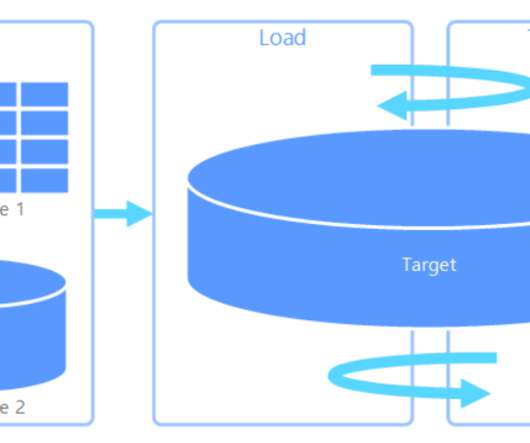
Hepta Analytics
FEBRUARY 14, 2022
DE Zoomcamp 2.2.1 – Introduction to Workflow Orchestration Following last weeks blog , we move to data ingestion. We already had a script that downloaded a csv file, processed the data and pushed the data to postgres database. This was used to test our setup. This week, we got to think about our data ingestion design. We looked at the following: How do we ingest – ETL vs ELT Where do we store the data – Data lake vs data warehouse Which tool to we use to ingest – cronjob

KDnuggets
FEBRUARY 18, 2022
Octoparse 8.5 is now released with game-changing new features and major improvements.

ProjectPro
FEBRUARY 16, 2022
Early in 2020, when Myntra launched its visual product search for the first time, it created waves in e-commerce. With this new feature, the customers no longer had to spend hours searching for a dress similar to the one they came across randomly in an advertisement. All they had to do was take a picture/screenshot and upload it on Myntra; the app would automatically fetch outfits similar to the picture.
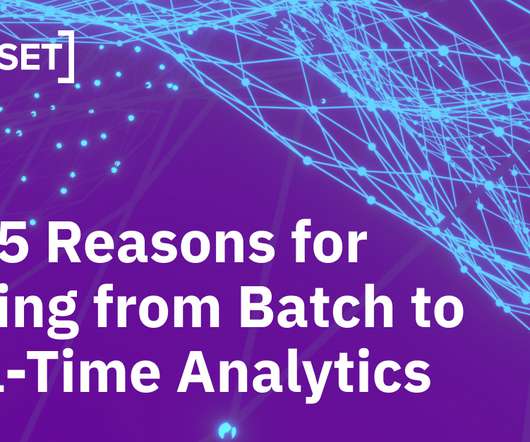
Rockset
FEBRUARY 14, 2022
Fast analytics on fresh data is better than slow analytics on stale data. Fresh beats stale every time. Fast beats slow in every space. Time and time again, companies in a wide variety of industries have boosted revenue, increased productivity and cut costs by making the leap from batch analytics to real-time analytics. One of the perks of my job is getting to work every day with trailblazers of the real-time revolution, whether it is Doug Moore at construction SaaS provider Command Alkon , Carl
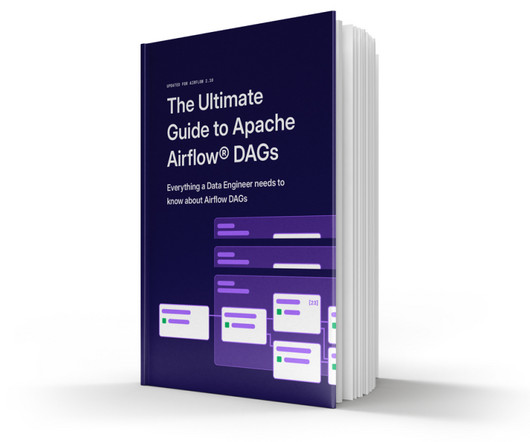
Advertisement
With Airflow being the open-source standard for workflow orchestration, knowing how to write Airflow DAGs has become an essential skill for every data engineer. This eBook provides a comprehensive overview of DAG writing features with plenty of example code. You’ll learn how to: Understand the building blocks DAGs, combine them in complex pipelines, and schedule your DAG to run exactly when you want it to Write DAGs that adapt to your data at runtime and set up alerts and notifications Scale you

Preset
FEBRUARY 13, 2022
Apache Superset is the most popular open-source data exploration and visualization platform in the world. YugabyteDB is a distributed SQL database that works seamlessly using the standards PostgreSQL connector.

KDnuggets
FEBRUARY 14, 2022
Give a boost to your career and learn job-ready machine learning skills by taking the best free online courses.
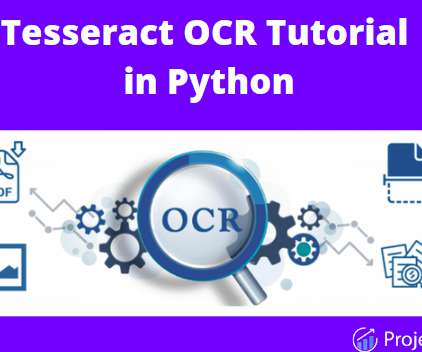
ProjectPro
FEBRUARY 16, 2022
Optical Character Recognition (OCR) has been used for decades across multiple sectors in the industry, such as banking, retail, healthcare, transportation, and manufacturing. With a tremendous increase in digitization in this 21st century, a.k.a Information age, OCR Python applications are witnessing huge demand. In fact, according to a recent survey, the market share of OCR will increase by 16.7% (compound annual growth rate) from 2021 to 2028 from 7.46 billion USD in 2020.

Zalando Engineering
FEBRUARY 16, 2022
Persisted Queries Persisted Queries in GraphQL are like stored procedures in Databases. To know about the Apollo's way of automated persisted queries, please follow their documentation here. In Zalando, we took a different approach - to disable GraphQL in production. It might sound counterintuitive at first - we have a GraphQL service, but we disable GraphQL in production - why?

Speaker: Tamara Fingerlin, Developer Advocate
In this new webinar, Tamara Fingerlin, Developer Advocate, will walk you through many Airflow best practices and advanced features that can help you make your pipelines more manageable, adaptive, and robust. She'll focus on how to write best-in-class Airflow DAGs using the latest Airflow features like dynamic task mapping and data-driven scheduling!
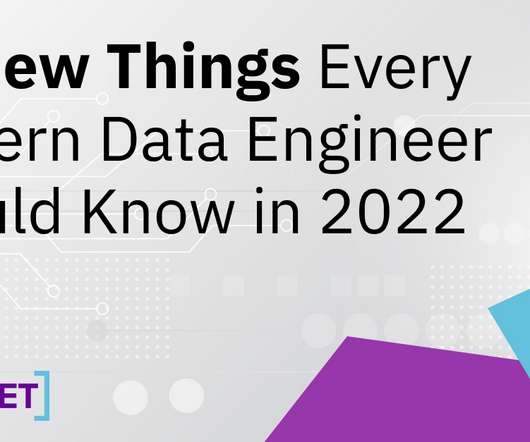
Rockset
FEBRUARY 17, 2022
It’s the start of 2022 and a great time to look ahead and think about what changes we can expect in the coming months. If we’ve learned any lessons from the past, it’s that keeping ahead of the waves of change is one of the primary challenges of working in this industry. We asked thought leaders in our industry to ponder what they believe will be the new ideas that will influence or change the way we do things in the coming year.

KDnuggets
FEBRUARY 17, 2022
Learn how to train, optimize, and build API with a few lines of code using AutoXGB.

KDnuggets
FEBRUARY 18, 2022
The best way to stop your enemy is to know your enemy. Here are four ways hackers are using data science - and how they can be stopped.

KDnuggets
FEBRUARY 17, 2022
Data Mesh in Action by Jacek Majchrzak, Sven Balnojan, and Marian Siwiak reveals how this new groundbreaking decentralized architecture looks for both small startups and large enterprises.

Speaker: Ben Epstein, Stealth Founder & CTO | Tony Karrer, Founder & CTO, Aggregage
When tasked with building a fundamentally new product line with deeper insights than previously achievable for a high-value client, Ben Epstein and his team faced a significant challenge: how to harness LLMs to produce consistent, high-accuracy outputs at scale. In this new session, Ben will share how he and his team engineered a system (based on proven software engineering approaches) that employs reproducible test variations (via temperature 0 and fixed seeds), and enables non-LLM evaluation m
Let's personalize your content